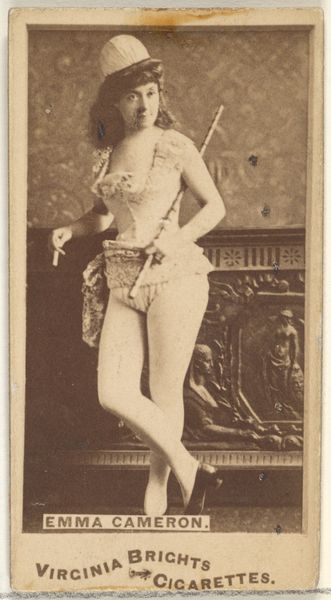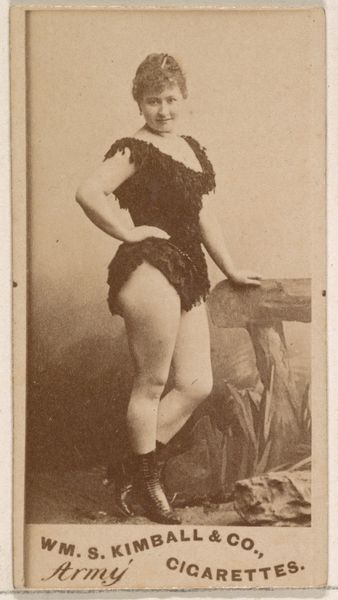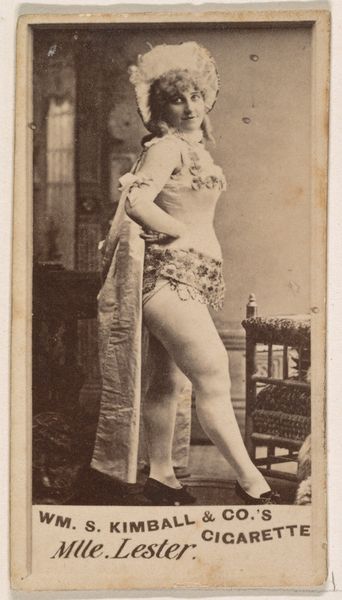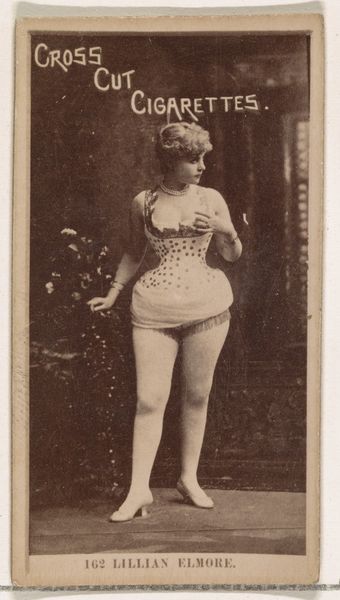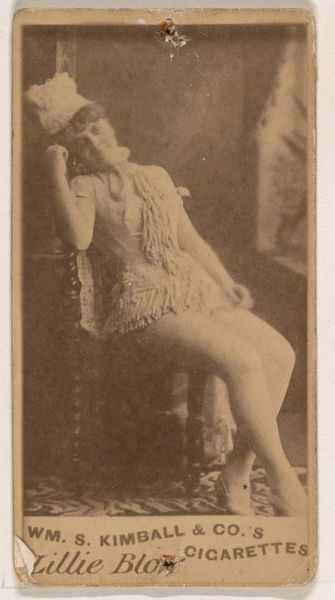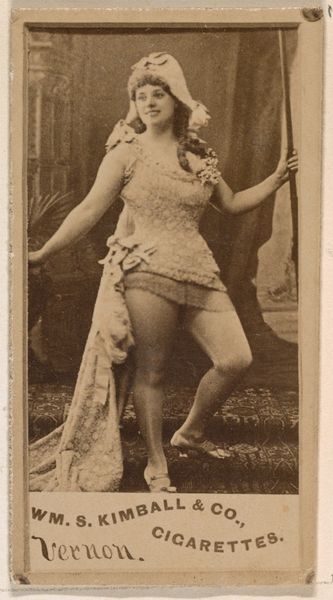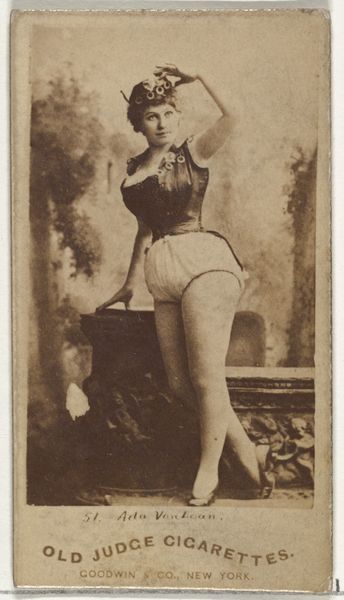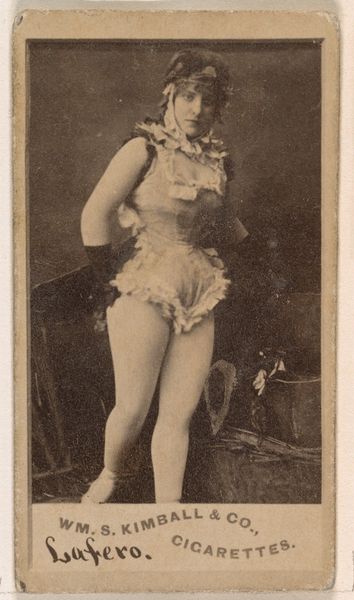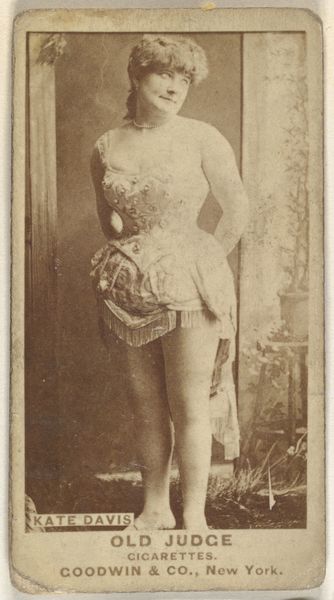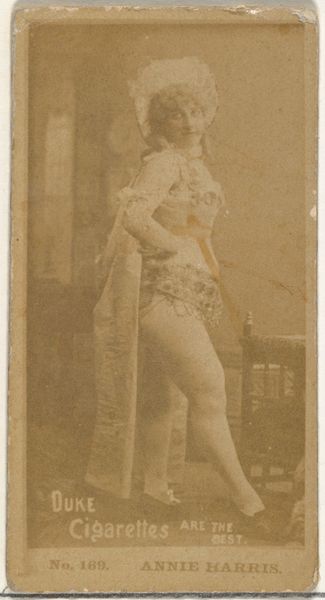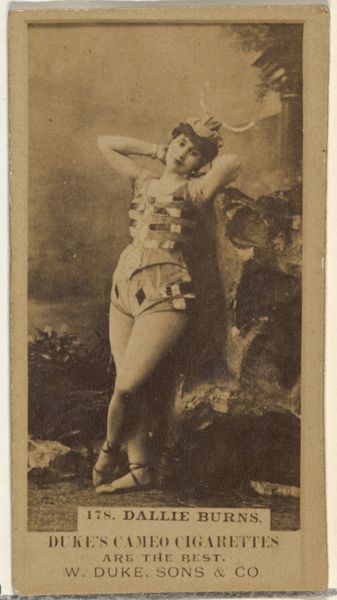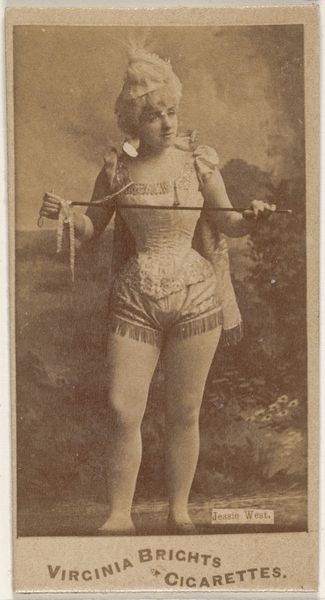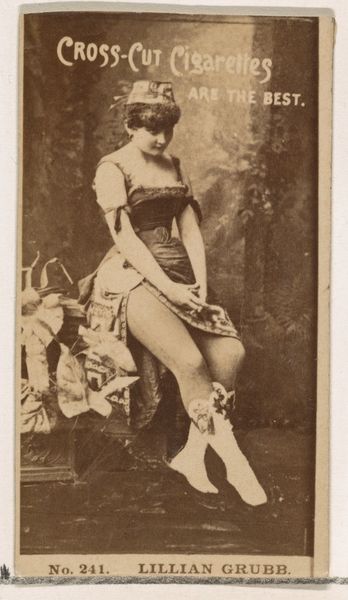
La Juche, from the Actresses series (N203) issued by Wm. S. Kimball & Co. 1889
0:00
0:00
drawing, print, photography
#
portrait
#
drawing
#
photo restoration
# print
#
figuration
#
photography
#
19th century
#
erotic-art
Dimensions: Sheet: 2 5/8 × 1 3/8 in. (6.6 × 3.5 cm)
Copyright: Public Domain
Editor: So, this is “La Juche, from the Actresses series” created in 1889 by William S. Kimball & Company, it is currently housed at The Met. This small print feels, surprisingly, quite bold in its direct gaze and subject. How can we understand its place and purpose, especially considering its...unconventional nature for the time? Curator: This print, part of a larger set distributed with cigarettes, is fascinating. It existed within a burgeoning commercial art world, yes, but it's important to remember these images were very much tied to social and gender politics of the period. Think about the target audience for cigarettes – predominantly men. Editor: Right, it's advertising meant to appeal to a specific demographic. Were these kinds of images controversial back then? Curator: Absolutely! On one hand, they reinforced the prevalent objectification of women, packaging them for male consumption. On the other hand, images of actresses and performers hinted at female agency and visibility, even if mediated through the male gaze. We must understand this wasn't fine art destined for galleries, but rather an object of mass consumption, blurring the line between public and private desire. What does this blurring do, historically? Editor: So, it normalizes a certain image of women in everyday life, and yet also confines it within the male sphere. The artist's "signature" also plays a crucial role, by giving the image authority. That actually shifts how I see this, knowing the context changes it completely. Curator: Precisely! And the fact that it survives in a museum collection raises questions about what we choose to preserve and how we assign value to such objects from the past. Editor: That's very true, thanks for widening my perception. I thought about a nice photo, but it says something more significant about power and its legacy.
Comments
No comments
Be the first to comment and join the conversation on the ultimate creative platform.
